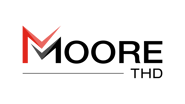Wendy Orleman has joined THD as vice president, client strategy, bringing over 20 years of experience leading strategy for nonprofit and commercial clients. We sat down with Wendy to hear how she will be helping clients grow and create meaningful social impact in her new role.
Q: In your role overseeing client strategy, what drives your recommendations as you help clients achieve their fundraising marketing aspirations?
A: Being visionary is exciting, and it's important to set sights on notable and ambitious goals. But there is no point to future planning if internal limitations keep organizations from implementing the steps needed to get them there. Those roadblocks might be an insufficient MarTech stack, a tradition of siloed marketing efforts, bandwidth and budget constraints, or databases that need closer attention. So often I see organizations purchasing the marketing strategy equivalent of a Learjet when what they needed was a car to move them forward. Our goal as a Marketing partner is undoubtedly to help clients envision what's possible while offering a practical road map on how to get there — one that's lined with achievable and critical milestones that add up to the big win. Results come when the ideal is balanced with reality.
Q: What are some of the practical things that THD delivers to help move clients toward bigger visionary goals?
A: It all depends on what a client is ready for. For many, it’s thoughtful donor journey mapping. While for others, we might work on scenario planning or consult on MarTech configuration. But whatever the problem/solution, most clients need a phased approach. What I appreciate about THD is that we come in with a diverse, experienced background; assess where the client is and where the client can conceivably get to in one, two, or three years; and build a systematic road map to achieve that. All the while, it's grounded in the aspirational vision, as we guide clients out of their comfort zone into a place where they may not have expected to arrive. I also believe that, as guides, the primary understanding that we must impart is the importance of having a runway to get there. Our job is to communicate that the undertaking is not a three-month fix. It might not be a six-month fix. Sometimes it can take a year or more. Expectation setting from the outset is essential.
Q: Tell me more about donor journey mapping and why you are such an advocate.
A: Clients might articulate a significant challenge — for example, maybe the average gift or the file size has been in decline. Perhaps the cause gained many COVID-19 donors, but now many have gone away. The best partner when facing daunting objectives is someone who emphasizes the importance of diagnosis — someone who will go in and peel back the proverbial onion to understand the “Why” behind vexing problems. Why are your COVID-19 donors behaving this way? Why did they give in the first place? And that is what donor journey mapping is all about. We get under the hood. We examine everything that may impact that journey — including organizational and operational issues. What could we optimize immediately? And then, what's more of a long-term solution that we need to work toward realistically?
Q: Are there commonalities among organizations that get the donor journey right?
A: First and foremost, it's having support at the very top of the organization. This is integral because the donor journey often crosses multiple teams within an organization. When there's buy-in from the top, and they support us as a partner, it helps us immerse in the way donors navigate through different communications they may get exposed to from various brand touchpoints. The lack of buy-in that our clients might run into when there isn't top-down support. For example, the Fundraising team cannot change the website because that's the Marketing department's domain. Or maybe they don’t have visibility to the various donor communications managed by their Planned Giving or Event Marketing colleagues — a huge hurdle that gets eliminated when senior-level leadership aligns on an effort.
Q: What would be your advice to someone in a situation where there isn't leadership buy-in and the organization is very siloed?
A: My best advice is to gain more insight into your donors, which could be simple research to uncover some enlightening data points. Might there be a way to look at your data from a new angle, or to look at data you might not have used before? A partner like THD can inspire fresh ideas and other workarounds, as well as novel approaches that could optimize programs using resources and tools that are already available. How can we maybe optimize a donation form? Improve a direct mail piece? Can best practices from our other work be applied to create a frictionless donor experience? There are always incremental steps we can take, and, together, they add up to a significant improvement.
Modern nonprofit marketing requires an increasingly donor-centric approach. And to do this well requires deepening your donor knowledge and understanding the donor journey. This awareness is vital in making informed calculations on presenting better content and creating better opportunities for sustainable donor engagement and, ultimately, brand loyalty.
To learn more about THD’s donor-centric nonprofit marketing strategies, contact us here.






